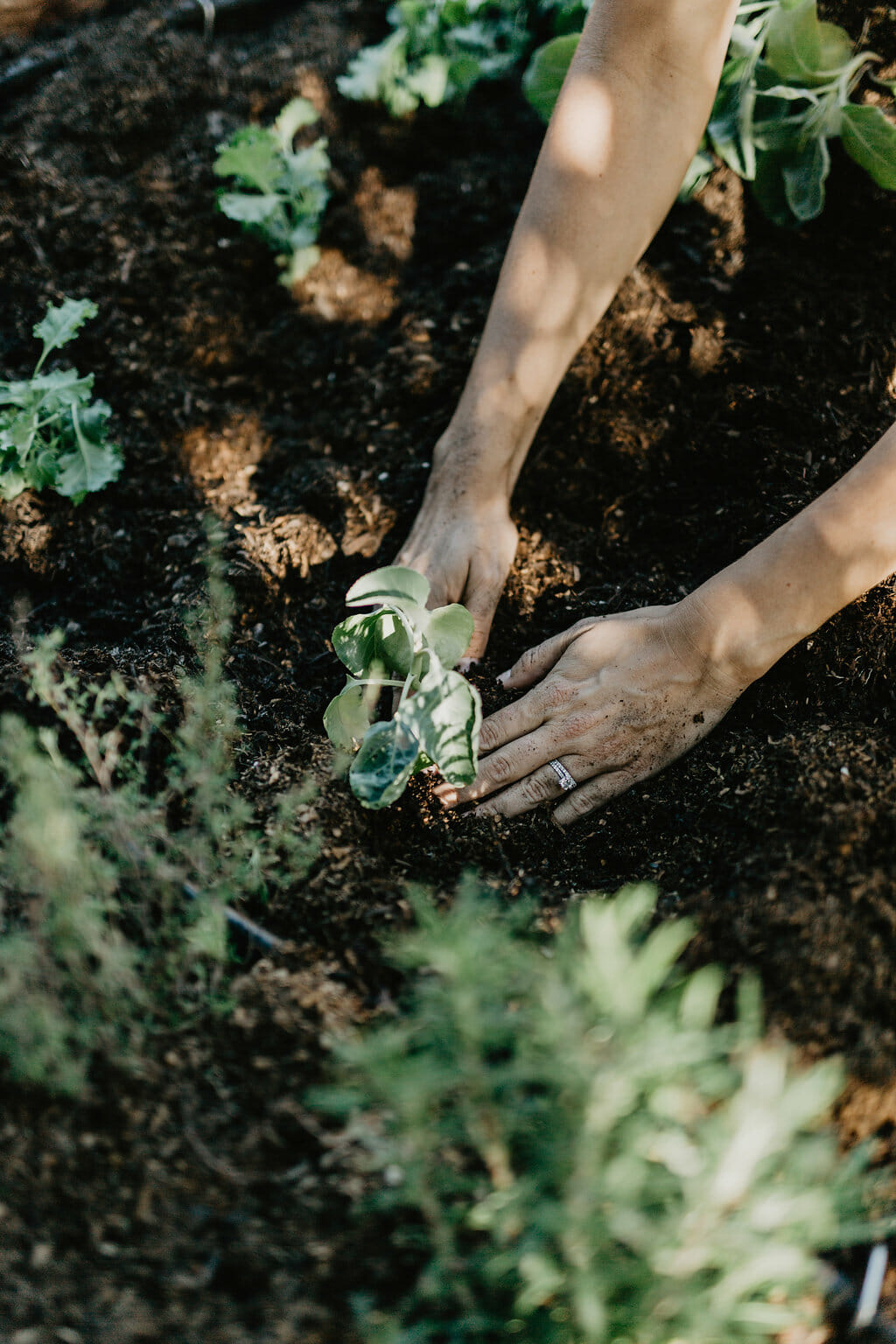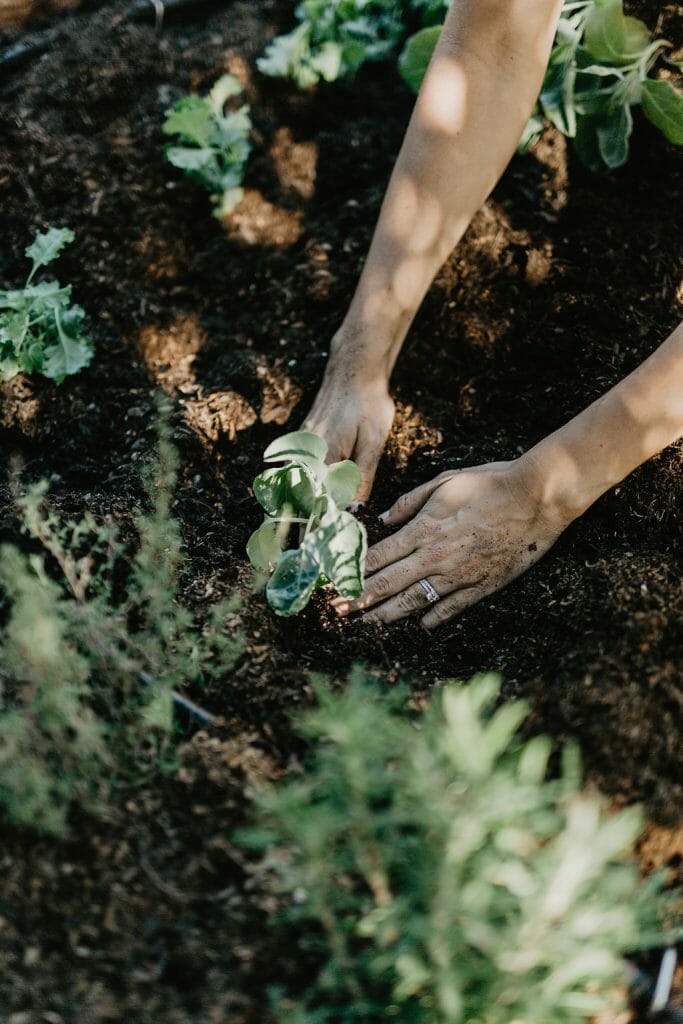
Soil Amendments & Soil Health Basics
If you were a friend coming over for a cuppa Earl Grey one afternoon to chat gardening and asked for my input, here is what I’d say in regard to soil health. I’ll not bore you with all the science because we don’t have time for that. I want you to rush home and get started. So, here we go.

The health of any soil comes down to a few factors, primarily beginning with the type of soil that you personally have.
There are three basic types of soil:
- Sandy soil slips through your fingers and has a hard time retaining water and nutrients.
- Clay soil is hard and sticky and has a hard time draining water.
- Loamy soil is soft yet sticks together loosely and can hold and release water well.
If you don’t have loamy soil, that is the goal. Loamy soil with good nutrients, a lot of microorganisms, and a lot of worms living in there.
The pH of your soil matters as well as some plants like more acidic soil, and some more alkaline or neutral. If you’re going to err, err on the side of acidic. However, testing for pH can be helpful if you think your soil is overall “good” but plants are struggling.
Honestly, I’ve never tested any soil – I just amend my soil base (we have clay) and go from there.
Soil Amendments
For almost ANY soil situation there are three basic amendments (these are things you add in) that I know will enhance the situation – even a beautiful loamy soil bed can benefit.
- Compost
- Worm castings
- Kelp meal
These three things are what I add to the top of my raised beds each season. Compost is nutrient dense and lacks byproducts like wood. It balances out the soil and adds in great microorganisms. Worm castings are worm poop, full of great nutrition, and help with water retention and aeration. Kelp meal is great because it’s just dried seaweed and has the nutrients that are sought after for plants: nitrogen, phosphorous, and potassium. It has over 70 vitamins and minerals and we love that!
I add about 3-4” of compost, a bag of worm castings, and a big scoop of kelp meal.
From time to time I’ve used liquid fish emulsion or seaweed to “fertilize” beds, but make sure it’s organic and from clean byproducts. This adds great nutrients as well. Be sure to apply anything like this to the soil (not the leaves of plants) at dusk or later, so as not to burn plants.
If you’re lacking worm activity, add worms, You can literally buy them on Amazon HERE. Worms are a key sign that good things are happening.
Tilling
I do not till my garden beds. I want the good microorganisms to stay intact. I want worms to stay hidden in the dark and I want tiny root systems to stay and feed the soil web. I do sometimes pull full plants out of beds, but also cut some just below the soil’s surface. The health of the plant will determine it. I don’t want pests or fungus to stick around, so always pull up plants that aren’t healthy.
Another way to keep your soil healthy is to avoid synthetic fertilizers and to use natural remedies instead. Thingks live chive spray to prevent mildew and comfrey fertilizer to add some nitrogen and potassium.
Healthy soil produces healthy and adaptable plants – and it’s often trial and error. I’ve used depleted bagged soil that’s full of wood chips (which sucks up nitrogen) and had gardens fail, then add these amendments and see it bounce back.
Water Retention
The last note is about water. You don’t want your garden beds to hold too much water, or to leech it. If there’s a water retention issue there are two methods for rectifying it: mulch on the top of beds or coconut coir added in. Peat moss used to be used for this, and is added to bagged soil often, but is a non-renewable resource so we avoid it. Coir has taken its place. You can buy blocks of coir to add to beds and that is very helpful for mixing into soil that is too sandy or lacks density.
To keep a garden is to be learning always. I recommend you just jump in and get started, learning as you go. A good gut instinct is better than a thousand pieces of advice.
